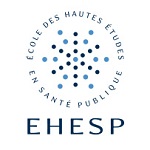[Interest of a geostatistical approach to analyze the geographical disparities in human papillomavirus vaccine coverage in France]
Intérêt d'une approche géostatistique pour analyser les disparités géographiques de la couverture vaccinale contre les papillomavirus humains en France
Abstract
Background: The use of geostatistical methods remains rare in health studies. In order to assess the usefulness of the geostatistical approach in epidemiology, we chose to apply these methods to the vaccination coverage rate (VCR) against human papillomavirus (HPV) in France. Indeed, HPV vaccine coverage remains low in France and geographical disparities are sizable. The objective of this study was to identify the socioecological factors that may explain these geographical variations. Methods: Sociological, economic and behavioral data for 2016 have been gathered (demographics and public health database, web and social networks) and were correlated with the HPV VCR vaccine coverage over the French territory. Homogeneous geographical areas defined by strong correlations for groups of variables were selected. In each homogeneous area, principal component analysis was performed and a geostatistical approach provided an estimate predicting vaccine coverage at a given scale. Results: HPV VCR spatial variations in France cannot be fully explained by a single model. In urban areas, a low rate of HPV VCR is preferentially associated with unfavorable socioeconomic factors (poverty, unemployment, immigration). In rural areas, HPV VCR is preferentially associated with sociocultural factors (socio-professional categories, education level, interest in alternative medicines the anti-vaccine movement). Two secondary geographical areas were defined: the Île-de-France region and 12 departments in northeastern France. In the Île-de-France region, the association with the economic factors one again appears as in urban areas in general. The northeasteran departments represent a particular case insofar as HPV VCR is relatively high, notwithstanding economic poverty indicators. Conclusion: Geostatistical modeling successfully identifies new potential explanations for HPV VCR geographical disparities in France. These results could help to adapt or develop future vaccination programs in specific areas by taking into account the sociological, economic and behavioral characteristics of their population
